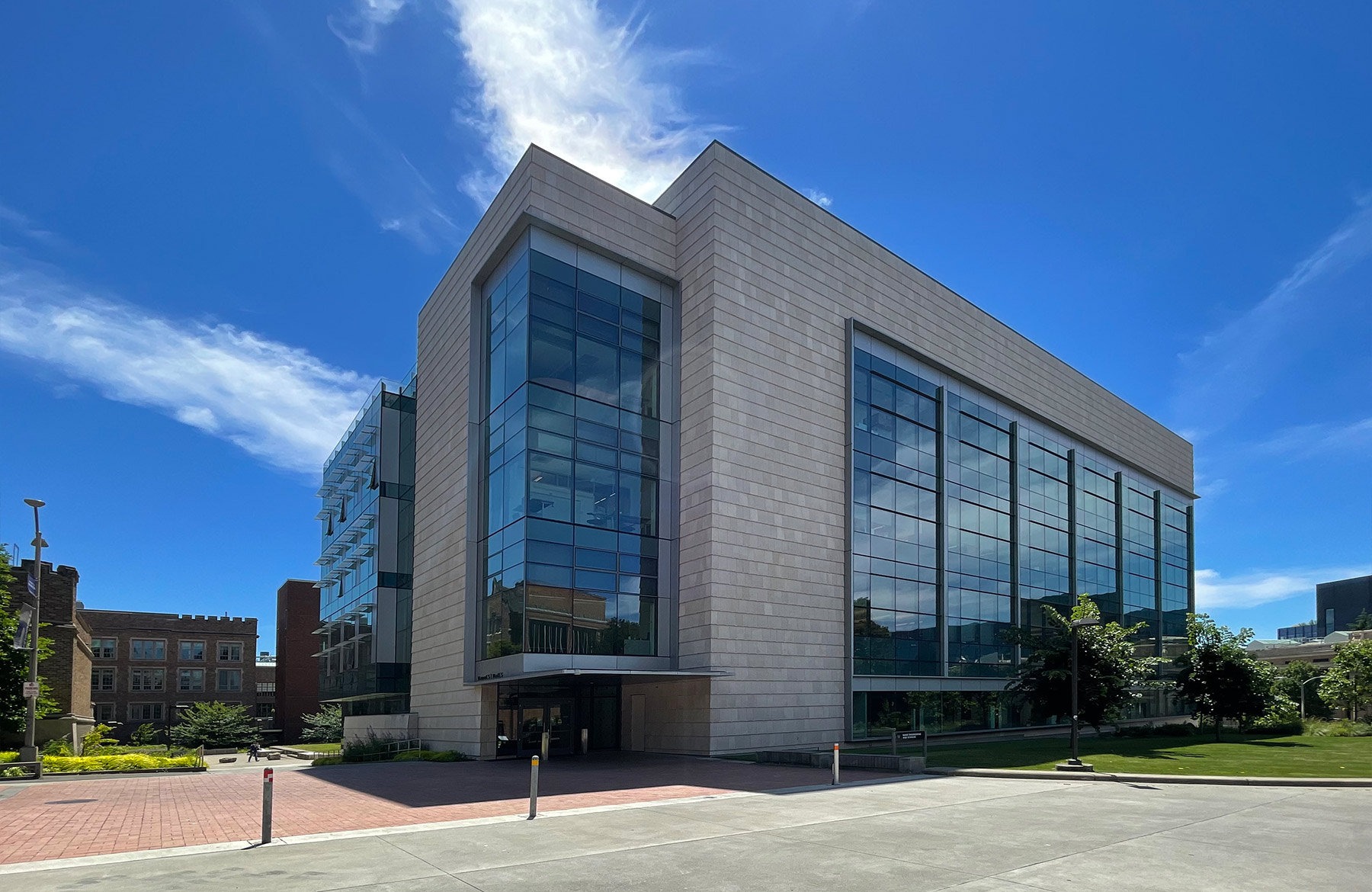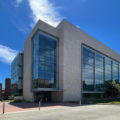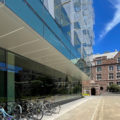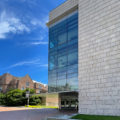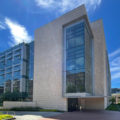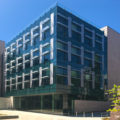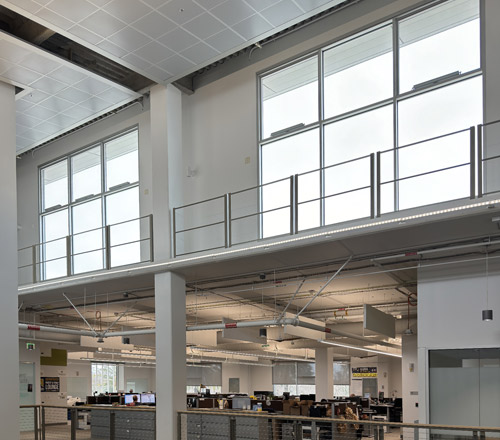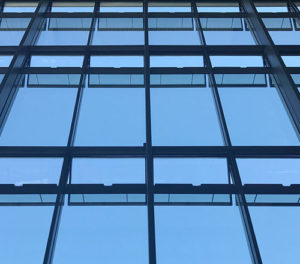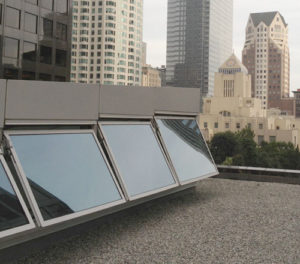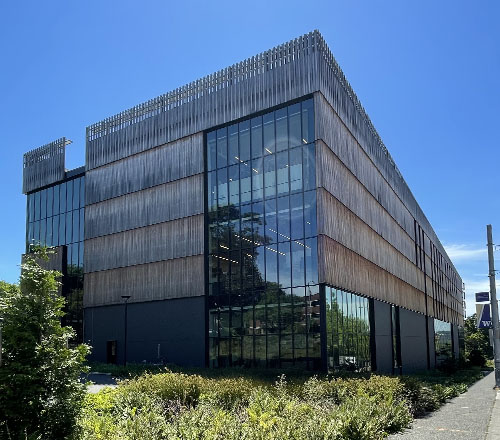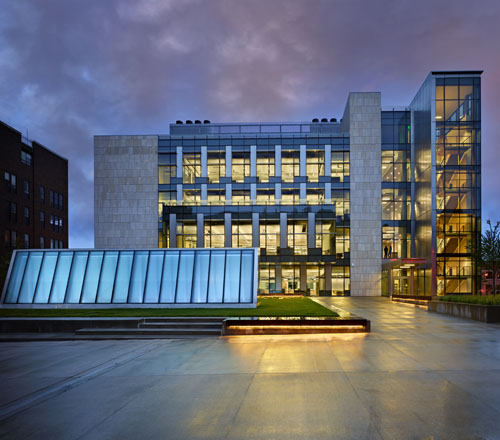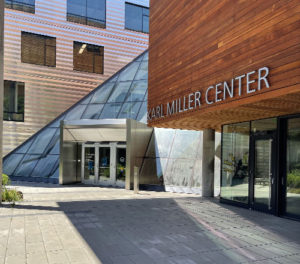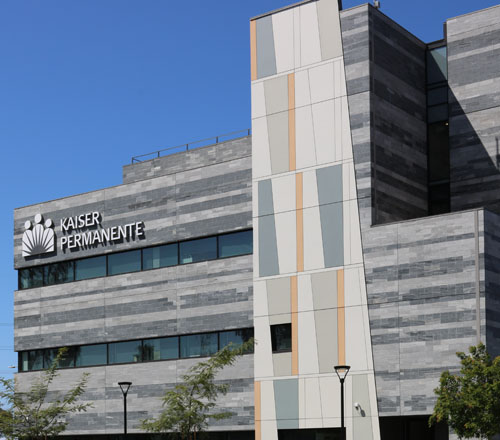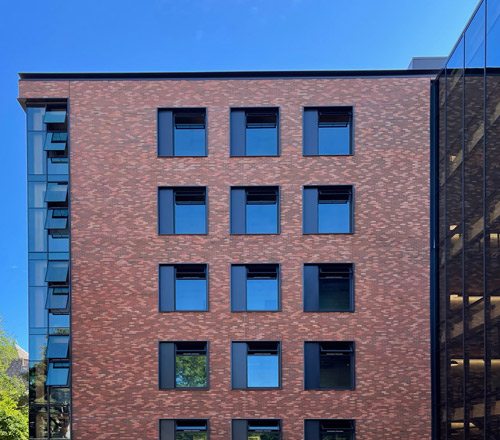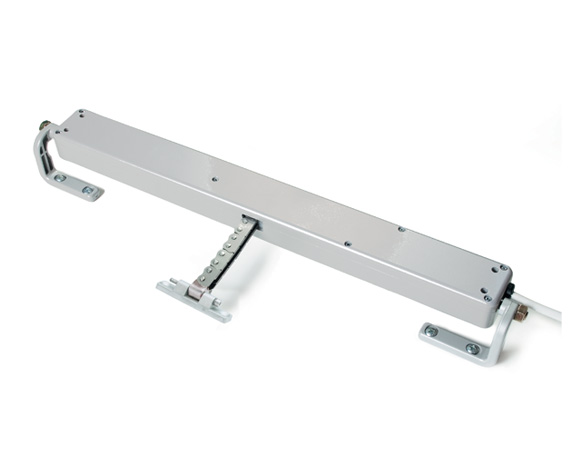Nano Engineering & Sciences Building
Architect: Zimmer Gunsul Frasca Architects LLP (ZGF)
Products: Vega and Synchro Vega Series Actuators
Glazing Co: Herzog Glass
![]()
Goals
The University of Washington desired a facility to accommodate growth in molecular engineering; respond to the evolving interdisciplinary nature of teaching and research; and fit within an area of campus that is home to recently revitalized facilities, as well as traditional campus architecture. The new space provides the necessary research laboratories and faculty offices to bring together students and researchers in bio-engineers, chemical engineering, nanotechnology, electrical engineering, mechanical engineering, materials science, and chemistry, which were previously dispersed throughout the campus. Research will lead to new discoveries with beneficial implications for major societal challenges ranging from energy, sustainability, and the environment to information technology to affordable and effective healthcare. Associated molecular and nanotechnology instrumentation is also consolidated into the new facility to provide greater synergy and enhanced research capabilities.
The integrated design provides tight adjacency between offices and research laboratories to encourage and facilitate collaboration between various disciplines. A further goal was for the facility to support the University’s commitment to advancing environmental stewardship by targeting new energy-saving strategies in a technically challenging laboratory environment. The performance-driven design encompasses technical systems integration, while simultaneously addressing the environmental impacts of the technologies.
Program
The 90,000 sf five-story building providing light-filled above grade office, laboratory and common spaces is the foundation for the master planned 160,000 sf two phase project. As part of phase 1, ground and basement level instrumentation labs meet ultra-low vibration and electromagnetic interference requirements, and allow all regularly occupied research labs and offices to take advantage of daylight and views. To accommodate the grade change of the site, and to allow multiple points of access from the campus, the building’s main entrances are split between two levels with ground-level entrances on the east and west sides.
As a forward-looking institution that values investment in resources and spaces that will create a center of excellence in scholarship and research, the University of Washington embraced a design concept that was taller than what the campus had initially envisioned. What started as a 77,000 sf building transformed to a 90,000 sf facility for the same budget. Originally a four-story building with half the surface area devoted to open ceiling, the design accommodates another floor. The five-story space allows for the optimum program for the site and accommodates future needs of the campus and research community. The narrow building footprint is appropriately sized for the site, and supports natural ventilation and day-lighting strategies.
Daylight from all four compass coordinates improves user experience throughout the building, encourages interaction, and supports safety in all four floors of regularly occupied laboratory spaces by increasing visibility for safety monitoring from the open-office to laboratory spaces.
In consideration of present and emerging programmatic needs on the campus of the University of Washington, the new Molecular Engineering & Sciences building has been thoughtfully designed to accommodate long-term flexibility, while ensuring sustainable strategies support the energy needs of a high-use laboratory space. The space will accommodate current research needs; attract new talent and researchers; and provide desirable space for collaborative efforts that support interdisciplinary research on a grant, or funding basis.

